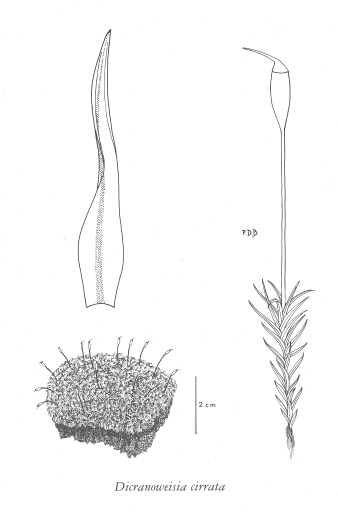E-Flora BC: Electronic Atlas of the Flora of British Columbia
Dicranoweisia cirrata (Hedw.) Lindb. ex Milde
curly thatch-moss (dicranoweisia moss) Dicranaceae Species Account Author: Wilf Schofield Extracted from Some Common Mosses of British Columbia Introduction to the Bryophytes of BC
|
||||||||||||||
